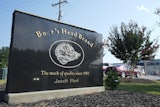A safety plan is one of the most basic, yet fundamental, tools of the safety professional. Risk assessment and control is key to an effective safety plan.
The trained safety professional can identify potential hazards, provide controls and often eliminate the hazards before workers are exposed.
Following is a list of essentials for creating an effective safety plan for your jobsites to protect the safety and health of your workforce:
- Know and understand the full scope of the work to be performed including manpower, equipment and hazardous chemicals to be used in the scope of work.
- Identify the hazards.
- Approach hazards using the hierarchy of controls – elimination of the hazard, substitution (work method, materials etc.), engineering controls (isolate workers from the hazard), administrative controls (change the way workers perform the task) and personal protective equipment.
- • Ensure the plan is supported by management and those in a position of leadership. Compliance can only be attained when everyone is on board and on the same page.
- • Provide the training and education necessary for workers to comply with the safety plan and understand why specific safety protocols are implemented.
Cherie Foerster is Safety Director with Cram Roofing, a commercial roofing contractor based in San Antonio and working nationwide.
Read Next






















